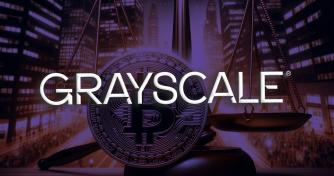Coinbase CTO: Crypto Has Bubble-Crash-Build Phases, Crucial For Rallies
Photo by Sebastian Pichler on Unsplash
Balaji Srinivasan, the chief technical officer (CTO) at Coinbase, the world’s largest crypto brokerage, exchange, and wallet platform, said at the TechCrunch Sessions Blockchain held in Zug, Switzerland that he initially bought Bitcoin in 2009 to combat the US dollar inflation and devaluation.
During the TechCrunch:Sessions Fireside Chat, Srinivasan said:
“I’ve been thinking about what is the nature of money since the financial crisis and all the money printing and mortgage-backed securities, and so on. US monetary policy was kind of consistent until 2008, until it takes this vertical kind of thing and a huge amount of money is printed. I looked at that for the longest time and said, ‘how do I short this?’”
Can Crypto Still be a Viable Alternative to Reserve Currencies With Volatility?
Both on the upside and downside, major digital assets such as Bitcoin, Ethereum, Bitcoin Cash, and Ripple tend to be extremely volatile, recording 5 to 20 percent gains or losses in value on a daily basis. But, for any asset class that is at its infancy, it is not possible to avoid volatility and significant changes in value until mid-term stability is achieved.
Echoing the sentiment of Ethereum co-creator and major blockchain software studio ConsenSys CEO Joseph Lubin, Srinivasan emphasized that the pattern of bubble-cash-build-rally phases of the cryptocurrency market enable developers and blockchain projects to build, sustain, and improve infrastructures that are necessary to facilitate growing demand towards the emerging asset class. Srinivsasan said:
“The reason this thing [cryptocurrencies] really had legs was after 2011 when there was a bubble and it went up, and it came down, and it didn’t go to zero. It kind of stabilized and kept coming back up. Around that time was basically when I said ‘okay, this is going to stick around, it’s got legs, it’s not going to zero.’ That was kind of a buidl year. We have this kind of bubble-crash-build phases in crypto, and that is really when I start to get involved,”
The “BUIDL” phase, a term which essentially means build that was influenced by the popular crypto expression HODL, has been crucial for the cryptocurrency sector and specifically for the core developers of open-source and public blockchain networks like Bitcoin and Ethereum.

In December 2017, as the price of bitcoin peaked at $20,000, the Bitcoin blockchain had difficulty processing around 500,000 transactions per day, and its mempool was almost always in the 100 million bytes region. Fees spiked to $20 to $30 per transaction, creating an inefficient environment for merchants and retailers.
Around that time, as decentralized applications (dApps) also began to congest the Ethereum network, primarily due to the exponential rise in demand for CryptoKitties, the digital collectibles app based on Ethereum. As the smart contracts protocol started to process over a million transactions per second, its infrastructure struggled with such a large amount of information on a daily basis, without two-layer security solutions.
Over the past six months, without significant congestion on the blockchain, developers of Bitcoin and Ethereum were able to focus on the development of Lightning, Plasma, and Sharding, which are two-layer scaling solutions capable of increasing the transaction capacity per second of public blockchains by a factor of 100 to potentially 10,000.
Second Phase

The second phase of Bitcoin and Ethereum will involve the full deployment of two-layer scaling solutions and the emergence of large-scale dApps that were not able to operate on the blockchain beforehand, due to the limited transactional capacity of public blockchain networks.
The next rally of the cryptocurrency market, which many experts predict will occur by the end of 2018, will greatly benefit from the buidl phase, especially from the deployment of robust and highly efficient infrastructure for data processing.




















































